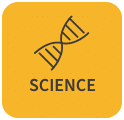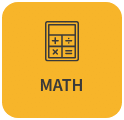- Ontario:
- Math
- Language Arts
- Social Studies
- Science
Ontario
Activities for Ontario Grade 6 Science Curriculum (2022)
Expectations are in black and skills are in blue. Click on the name of the skill to practice that skill.
Please check back as we are always adding more content!
6.B Life Systems – Biodiversity
B1. Relating Science and Technology to Our Changing World
B1.1 assess the benefits of biodiversity and the consequences of the diminishing of biodiversity
Digital Resources
• Lesson 10 – How Biodiversity Benefits Humans
• Lesson 08 – Medicine from Plants
Printable Worksheets
B1.2 analyse a local issue related to biodiversity while considering different perspectives; plan a course of action in response to the issue; and act on their plan
B2. Exploring and Understanding Concepts
B2.1 describe the distinguishing characteristics of different groups of organisms, and use these characteristics to further classify these organisms using a classification system
Digital Resources
• Lesson 02 – The Animal Kingdom
• Lesson 04 – The Forgotten Kingdoms
• Lesson 05 – Cells: The Building Blocks of All Organisms
Printable Worksheets
B2.2 demonstrate an understanding of biodiversity as the diversity of life on Earth, including the diversity of organisms within species, among species in a community, and among communities and the habitats that support them
B2.3 describe ways in which biodiversity within species is essential for their survival
B2.4 describe ways in which biodiversity within and among communities is essential for maintaining the resilience of these communities
B2.5 describe interrelationships within species, between species, and between species and their natural environment, and explain how these interrelationships sustain biodiversity
B2.6 explain how invasive species reduce biodiversity in local environments
B2.7 explain how climate change contributes to a loss of biodiversity, and describe the impact of this loss
B2.8 describe the importance of biodiversity in supporting agriculture, including Indigenous agriculture around the world
6.C Matter and Energy – Electrical Phenomena, Energy, and Devices
C1. Relating Science and Technology to Our Changing World
C1.1 assess the short- and long-term impacts of electrical energy generation technologies in Canada on society and the environment, including impacts on First Nations, Métis, and Inuit communities, and on climate change
Digital Resources
• Lesson 01 – Using Electricity
• Lesson 09 – Life Without Electricity
Printable Worksheets
C1.2 assess choices that reduce personal use of electrical energy from both renewable and non-renewable sources, and advocate for the responsible use of electrical energy by the school community
Digital Resources
• Lesson 05 – Using Water to Produce Electricity
• Lesson 06 – Using Wind to Produce Electricity
Printable Worksheets
C2. Exploring and Understanding Concepts
C2.1 explain commonly observed electrostatic phenomena, using the principles of static electricity
C2.2 describe current electricity, and compare and contrast current electricity with static electricity
C2.3 identify materials that are good conductors of electric current and materials that are good insulators
C2.4 describe how technologies transform various forms of energy into electrical energy
C2.5 describe ways in which electrical energy is transformed into other forms of energy
C2.6 explain the functions of the components of a simple electrical circuit
C2.7 distinguish between series and parallel circuits, and identify common uses of each type of circuit
6.D Structures and Mechanisms – Flight
D1. Relating Science and Technology to Our Changing World
D1.1 assess the impacts on society of aviation technologies, while considering both local and global perspectives
D2. Exploring and Understanding Concepts
D2.1 identify flight-related applications of the properties of air
D2.2 describe the relationships between the four forces of flight – lift, weight, thrust, and drag – that make flight possible
D2.3 describe ways in which flying machines and various organisms use balanced and unbalanced forces to control their flight
Digital Resources
• Lesson 06 – Aircraft with Motors
• Lesson 07 – Aircraft Without Motors
Printable Worksheets
D2.4 describe ways in which the four forces of flight can be altered
D2.5 describe characteristics and adaptations that enable organisms to fly
6.E Earth and Space Systems – Space
E1. Relating Science and Technology to Our Changing World
E1.1 analyse the impact that conditions in space have on humans engaged in space exploration, and explain how humans meet their social, emotional, and physiological needs in space
E1.2 assess the role of space exploration technology in observing and understanding environmental changes on Earth, including climate change
E1.3 evaluate the social and environmental impacts of space exploration, while taking various perspectives into consideration
E2. Exploring and Understanding Concepts
E2.1 identify components of the solar system, including the Sun, Earth and other planets, natural satellites, comets, asteroids, and meteoroids, and describe their main physical characteristics
Digital Resources
• Lesson 01 – Our Sun Is a Star
• Lesson 03 – Planets in Our Solar System
• Lesson 07 – Explore the Night Sky
Printable Worksheets
E2.2 distinguish between the concepts of mass and weight
E2.3 describe the relationship between the force of gravity and the weight of a body
E2.4 identify the types of bodies in space that emit light and those that reflect light
E2.5 describe various effects of the relative positions and motions of Earth, the Moon, and the Sun
E2.6 identify various technologies used in space exploration, and describe how technological innovations have contributed to our understanding of space
Digital Resources
• Lesson 10 – Other Spacecraft
• Lesson 12 – Space Technology
• Lesson 13 – It Came From Space









